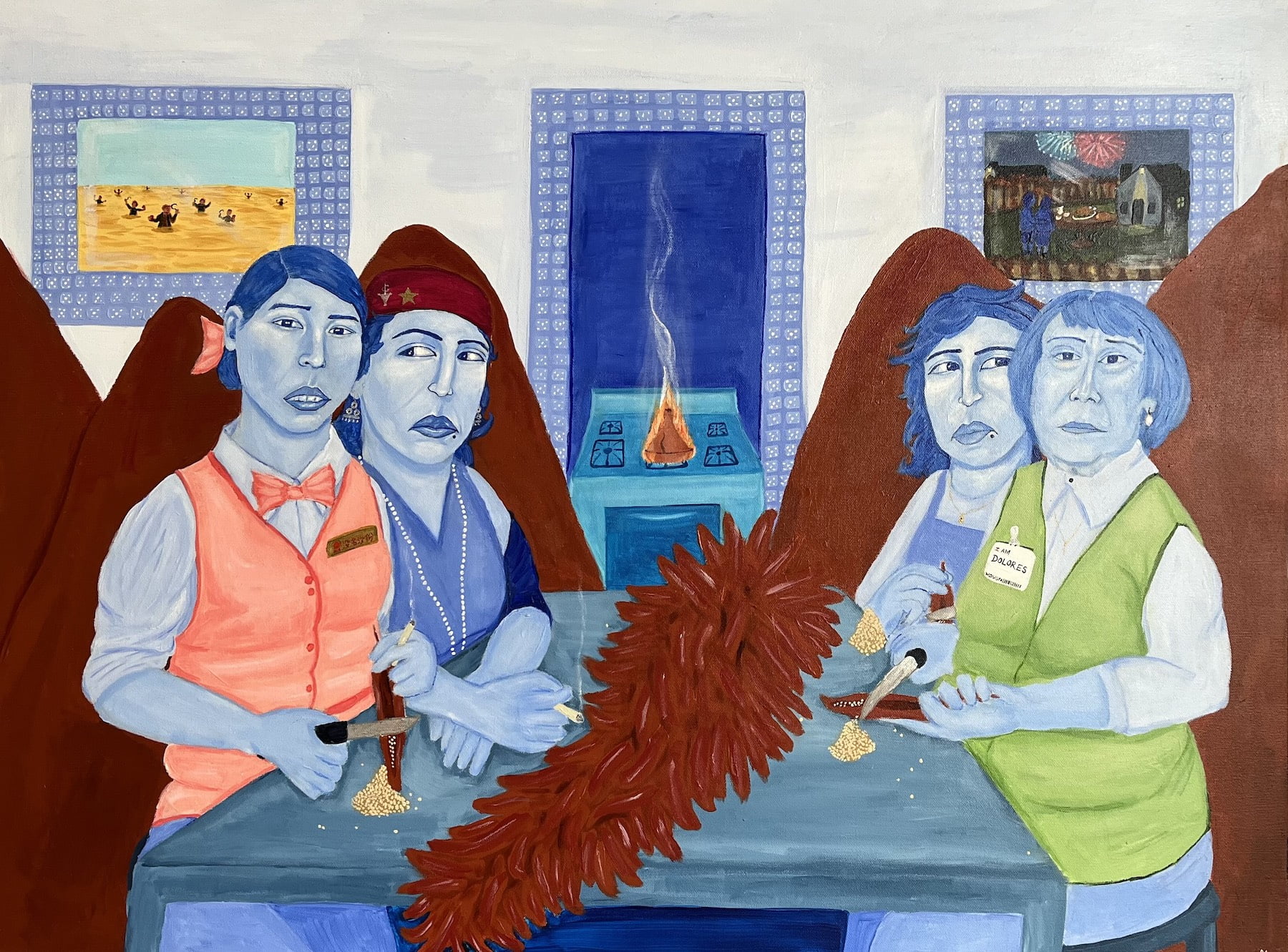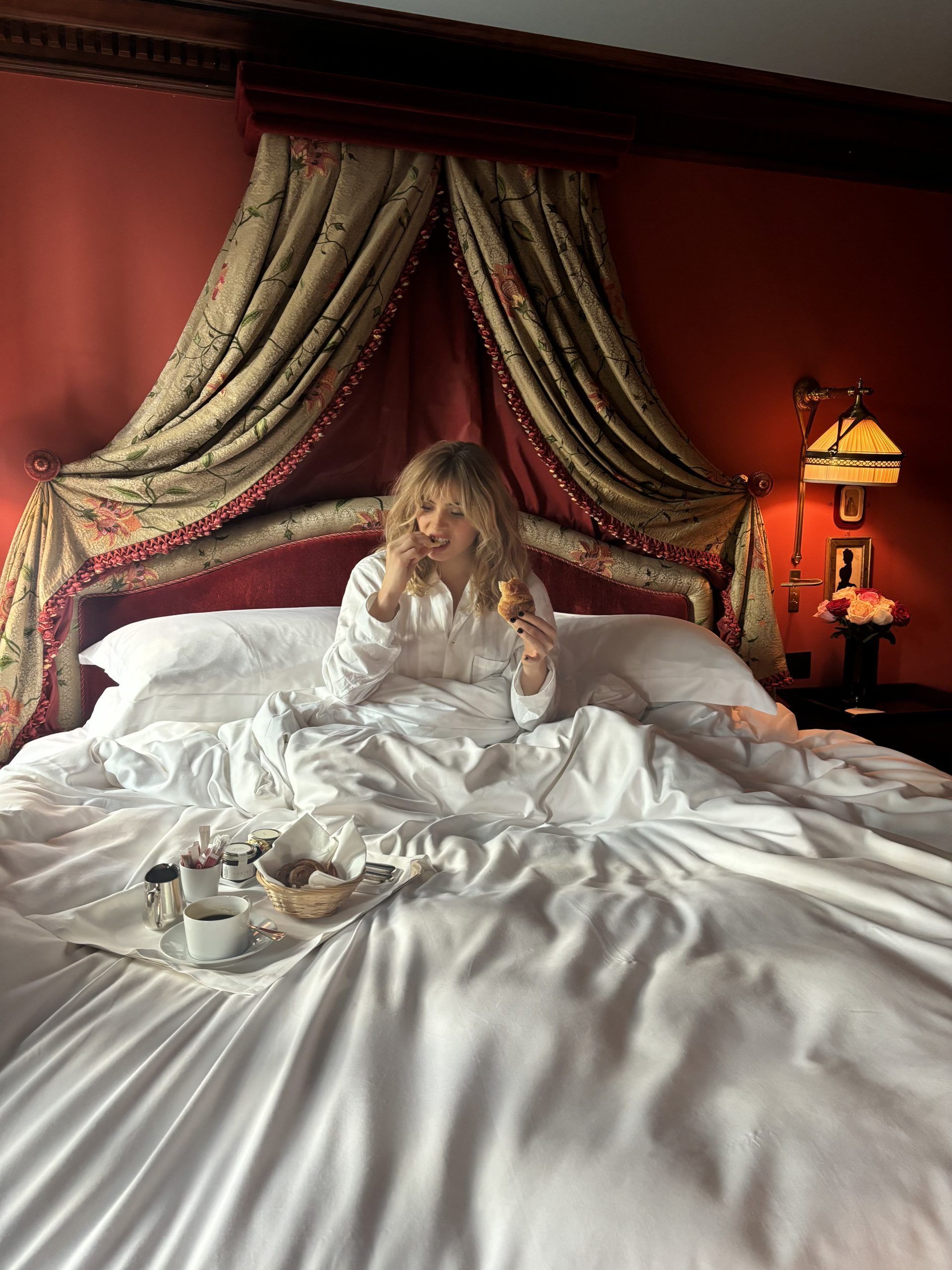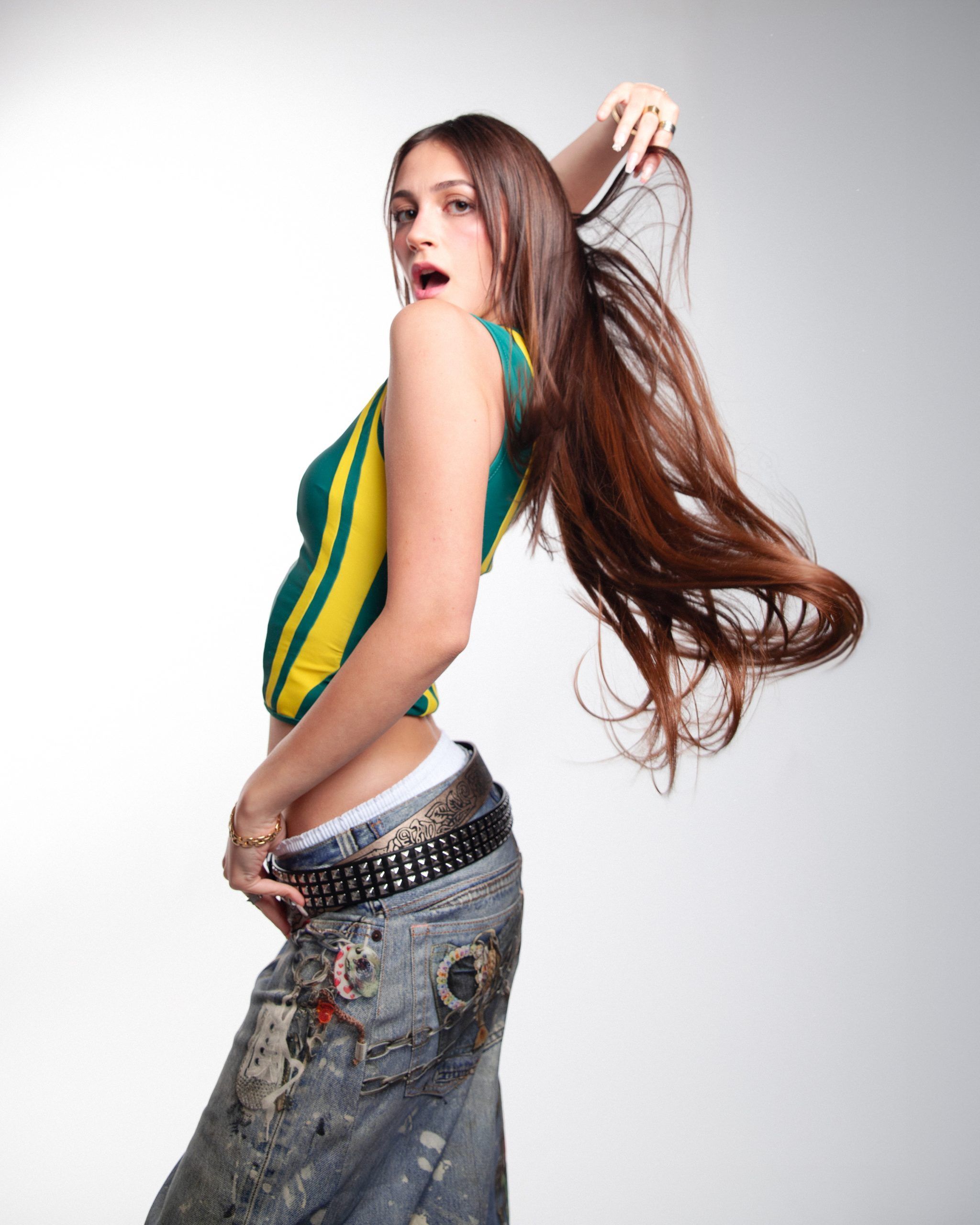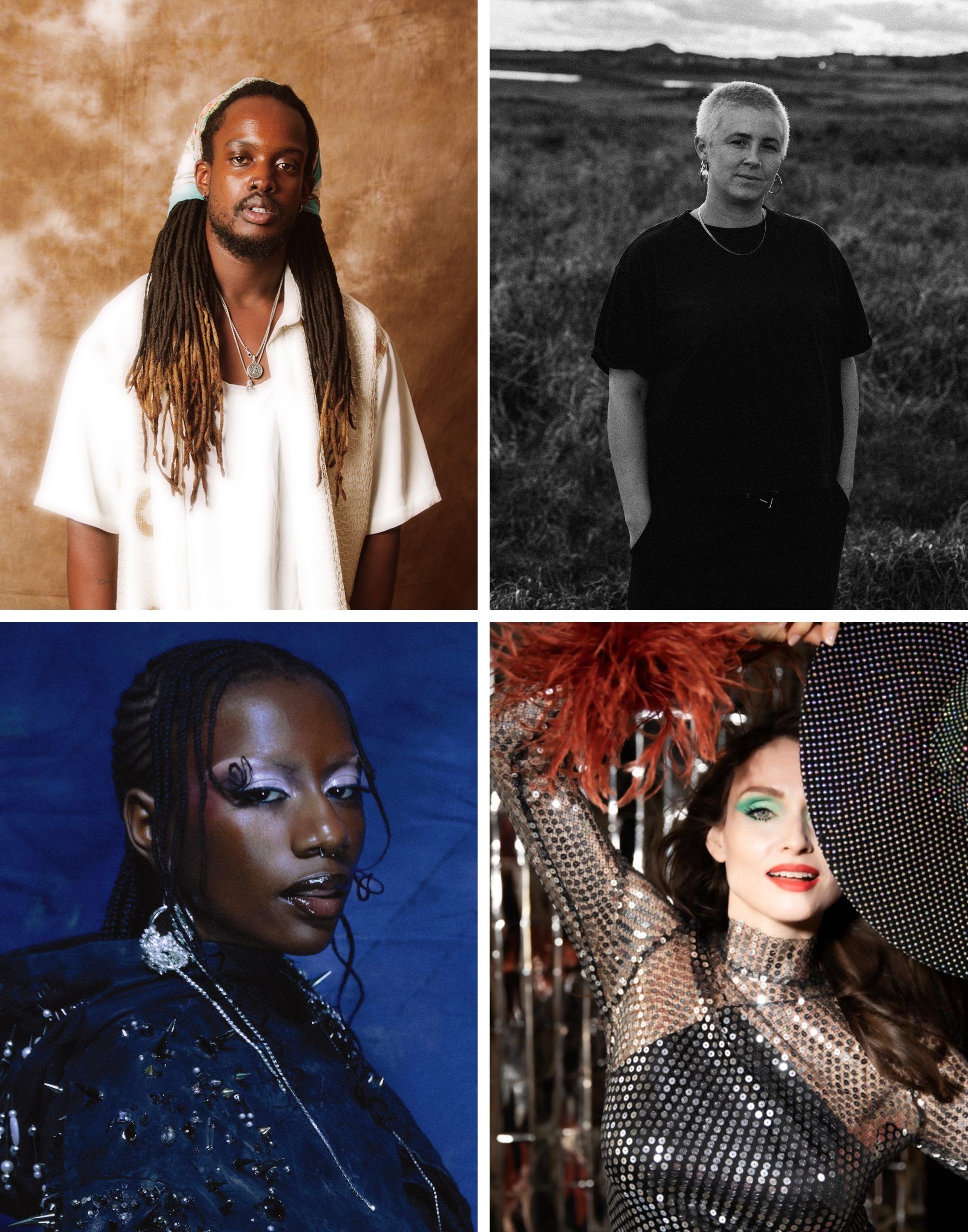For Massoud Hayoun, 36 year-old visual artist and storyteller of Jewish-Arab heritage from Los Angeles, to paint is to tell a tale.
An accomplished journalist who has reported for Al Jazeera, The Atlantic and the South China Morning Post, among others – award-winning author Hayoun began painting during the pandemic. Following a personal loss, he was driven to embrace a more accessible and immediate form of narration than writing.
Rich in colour and tinged with a sense of nostalgia that evokes a fondness for bygone days, Hayoun’s works are primarily an account of the life of the artist’s late grandparents, a poignant and heartfelt visual telling where the personal and the political are inextricably bound together in narratives of immigration and displacement, of hope and love that transcend cultural boundaries.
With a number of successful international exhibitions and three critically acclaimed books under his belt – When We were Arabs (2019); Building 46 (2022) and Last Night in Brighton (2022) – Massoud Hayoun has very clear ideas about the arts he has chosen to pursue. Unlike writing – which is, ultimately, an insular process – painting has proved a merrier pursuit, allowing him to breathe new life onto canvas, of those he most loved.
1883 arts editor sat for a chat with Massoud Hayoun to discuss his work, creative process and future professional pursuits – and to find out what it is about figurative painting that works best as his creative medium.
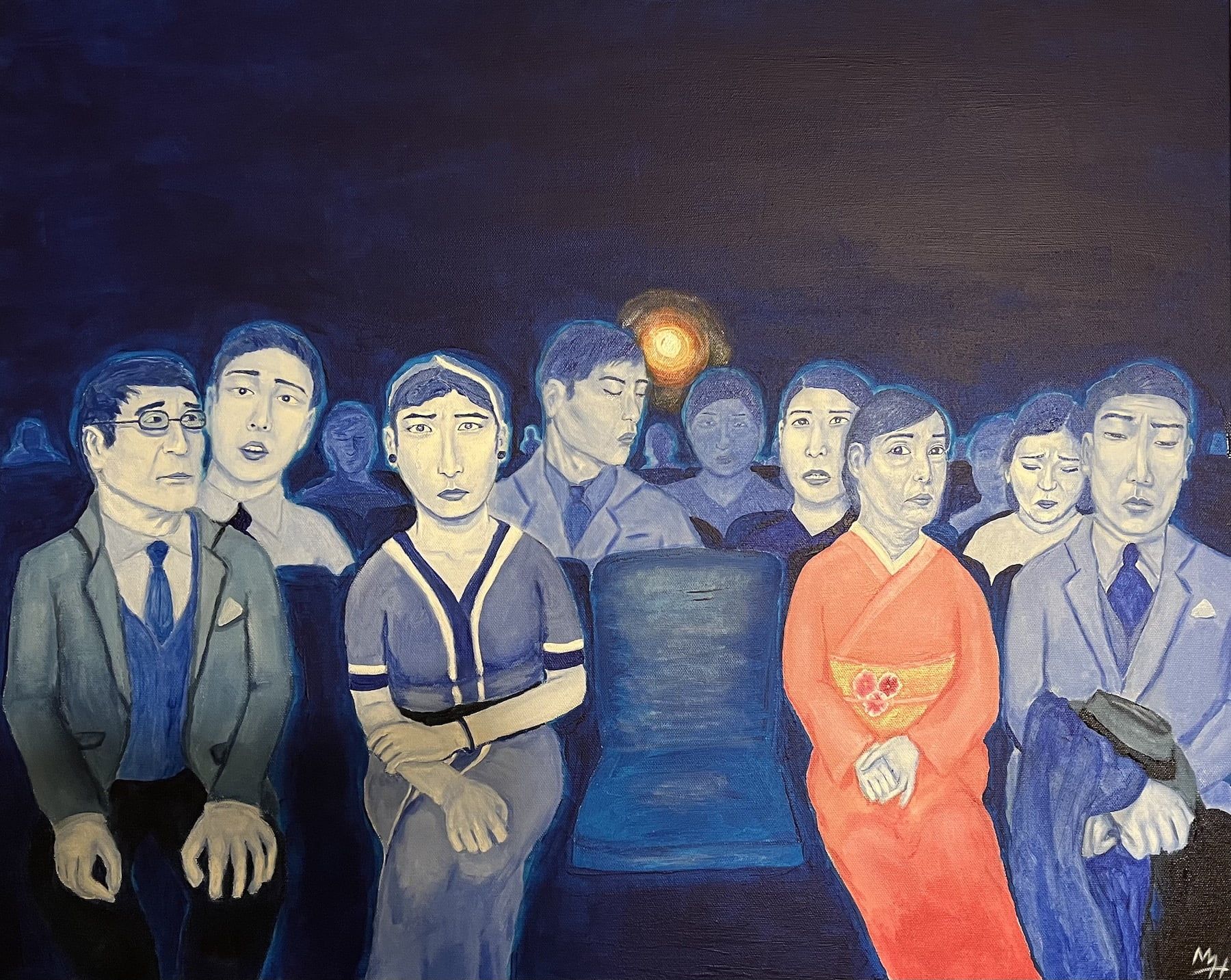
Massoud Hayoun, A Tokyo Cinema Watches the Opening Sequence of Hiroshima, Mon Amour in Summer 1959 — For Emmanuelle Riva, my would-be lunch date who wanted us to disarm, 2023
Hello Massoud, how are you? Can you briefly introduce yourself to our readers and describe your practice?
I’m a painter based in Los Angeles. I mostly paint dead people — and among the dead people I paint, I mostly paint my Tunisian and Moroccan-Egyptian grandparents who raised me. Most of my paintings explore what is personal about politics and the reverse. My grandparents were very outspoken, politically. So I like to see myself as breathing life back into them by allowing them — mostly in acrylics on canvas — to say things I imagine they’d have liked to say about current events. In some pieces, I focus on people and places I’ve experienced in my travels for journalism. Those paintings thirst for a more loving world, and in that sense, my grandparents are present in them too, if not physically then spiritually. I’ve shown my paintings across the United States and internationally.
I’m also an author and an investigative journalist. I won an Arab American Book Award for my first book, When We Were Arabs, in which I posit a political theory of the Arab identity and apply it to the lives of my grandparents. The second two books are fictions. Ai Weiwei called the first one “exquisite”. The second one is surprisingly a little like the recent film “All of Us Strangers”, but Egyptian-American. I also won an award for an investigative business story once.
I’m gay and left-handed. I love Stevie Nicks, Beach House, and Abdel Halim Hafez. I can’t seem to have a lasting relationship with any of the men I date, and that’s alright; and I love bread. Maybe that’s why!
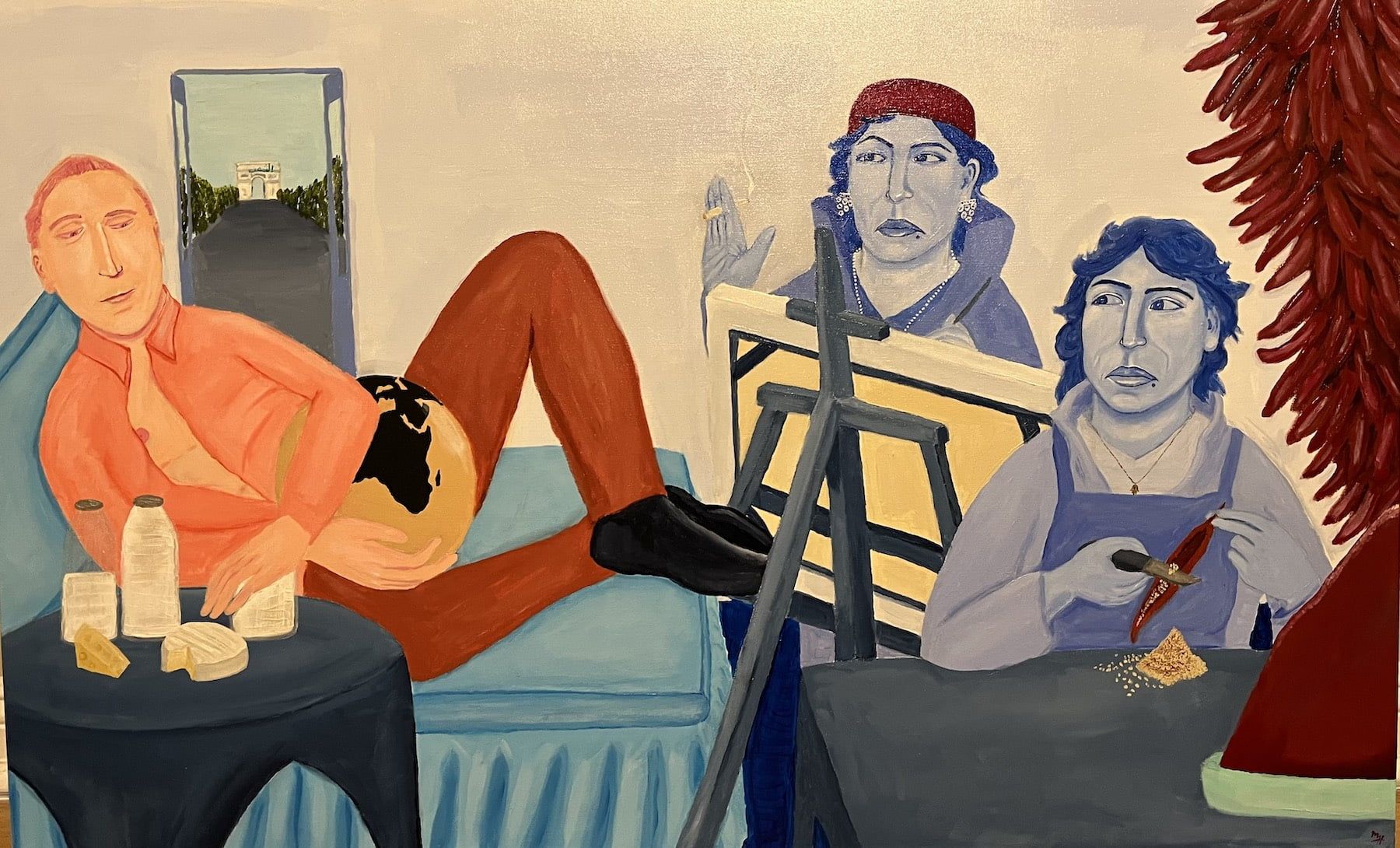
Massoud Hayoun, 21st Century Occidentalist Portraiture, 2023
Tell us about your path thus far as a visual artist; when did you become interested in making art? What drew you to figurative painting?
In 2016, I moved back to Los Angeles from New York to help take care of my grandmother, who raised me, and we planned to write my first book together. Two months after we got a book deal, she died. In the final years of her life, she started drawing after not being visually creative as such. That inspired me — that she could re-invent herself so late in the game. It made me feel like reaching back into my earlier youth to the visual arts I had loved and re-inventing myself as the visual artist I have always been but that society made me feel it was impractical and foolish to pursue professionally.
I enjoy that anyone can look at a painting and experience it, even without the privilege of an education or literacy. That’s, of course, not the case for books. Even if people can read, many don’t have the time or energy to devote to completing a book, particularly in an extreme capitalist society like the Untied States.
I was drawn to figurative painting also because of values that could be described — more or less — as socialist. People fascinate me. I got into journalism to speak to a great many people, and thanks to journalism, I have. I’ve spoken to elected officials, undocumented migrants, nuns, sex workers, murderers, Hollywood stars, businessmen suspected of corruption, soldiers, drug-cartel-affiliates, a death row inmate. I’ve looked them in the face; I’ve found there the subtle things that are already art or artful. I’m sharing those with you. That’s what I’m doing in my paintings. Reporting. More reporting, but with not so much concern about search engine optimisation and meeting the targets and other dictates of whatever business interest or government is funding our world media these days.
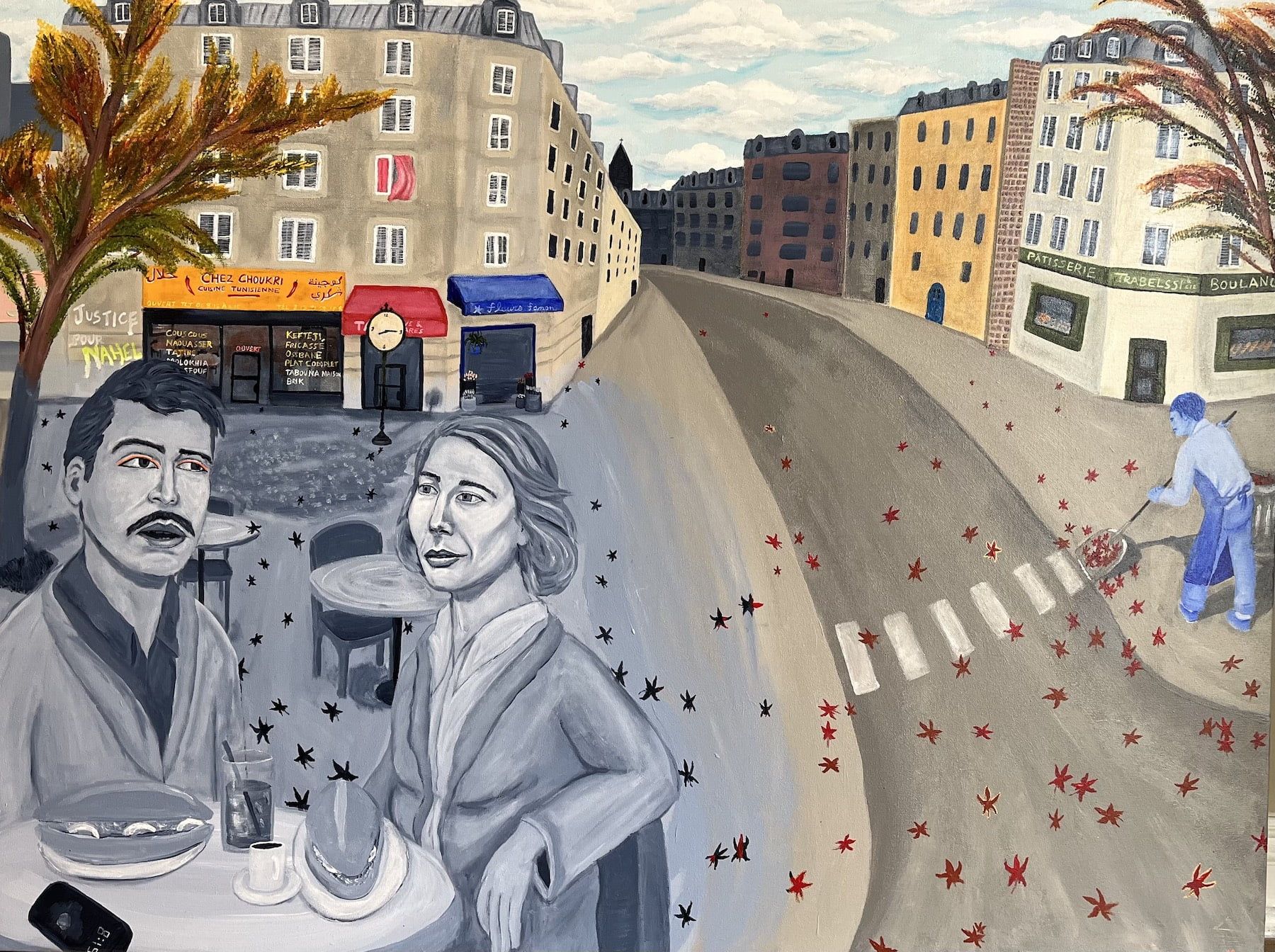
Massoud Hayoun, Après quelques années de retard, le dejeuner • Les feuilles mortes se ramasstent à la pelle • 8:15, 2023
How do you go about creating your paintings? How would you describe your creative process?
I start with story. There’s something I want to convey to the world — something true and often narrative, and I think of a nuanced and subversive way of doing it. I then try very hard to push myself past my limits with the execution of those ideas. I fall flat on my face, I feel bummed, I picked myself up and push myself harder. Then I eat cake or get on Grindr and try to forget the struggle. Then I return to it and repeat. And repeat.
What themes do you feel most drawn to when painting?
Arabness is a major theme. Another is people and longing for a world where love isn’t naive but actually a very intelligent political philosophy.
What artists do you feel have influenced the way you paint?
I try very hard not to be influenced by anyone or anything. Along the way, some people have shared with me very basic rules of acrylic painting. I have absorbed them with reticence. Maybe that’s foolish, but so many legends I’ve read or heard of have insisted that artists must forget their fine arts educations and influences and paint something raw and real, insofar as that’s possible. I’m trying! There are a great many artists I admire, but when I come to my canvases, I try to clear my mind of everything but my weird, little thoughts.
That said, my latest passion is the work circa 1950 of Spanish-Mexican painter Jesús Martí Martín — his portrayal of masses of massive humanity. Faceless humanity, and yet each brush stroke to my mind is imbued with its own character.
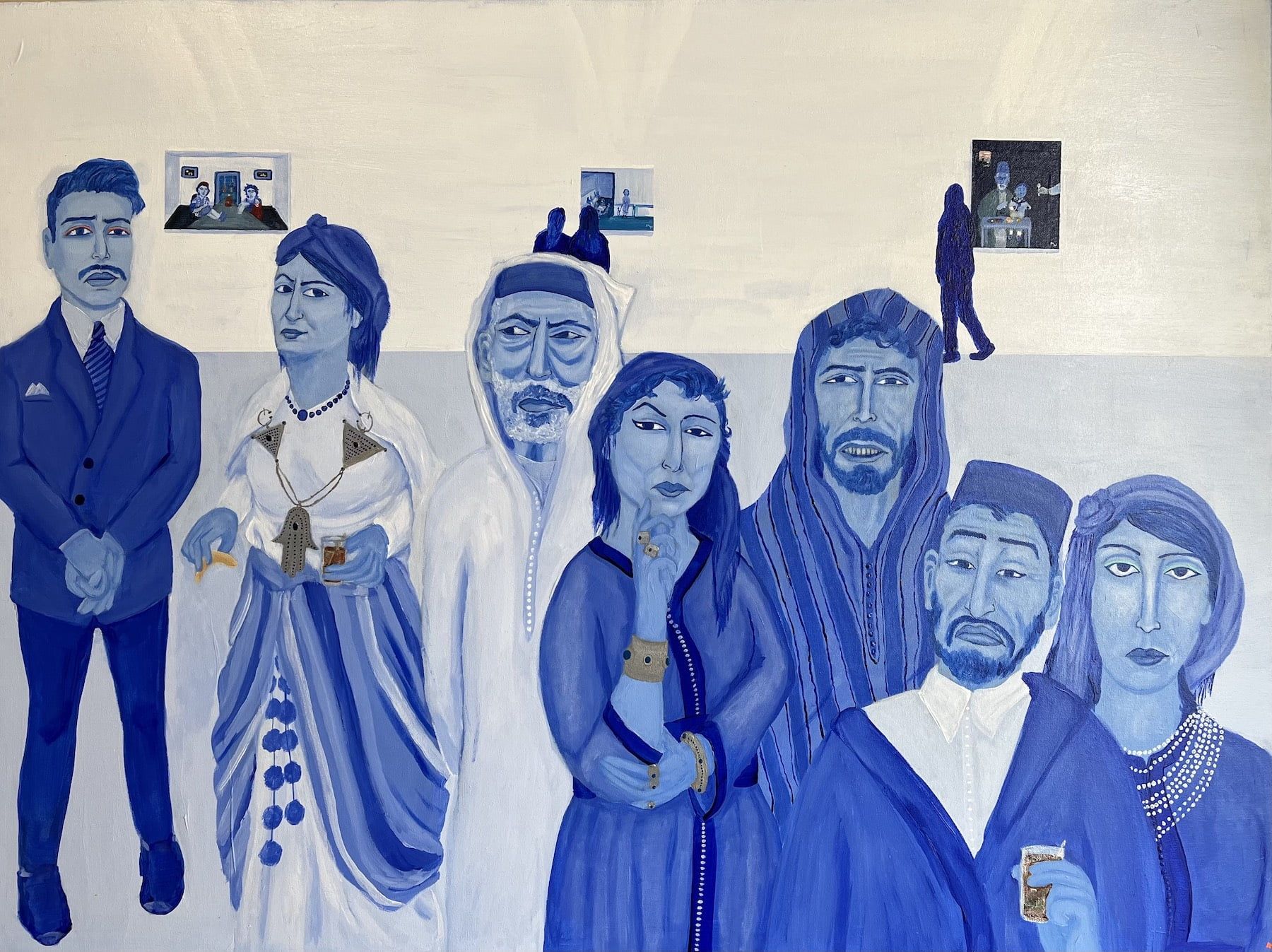
Massoud Hayoun, My ancestors came to my show in Morocco, wa oult, ‘yak chi bas makayn, ya oueldna laaziz, 2023
Besides being a painter, you are also a journalist and author with three books to your credit. Can you tell us a bit about your writing?
My writing is very much like my painting — deeply personal, deeply political. That’s true of the journalism, the nonfiction book, and the fiction books. The problem with book-writing, beyond the fact that books are expensive in the U.S. and therefore less accessible to many, is that it can take years to say what you’re trying to say. If it’s worth saying, you should want to say it right now and with all of your chest. I do that with paintings. I work fast and with the whole of myself.
Of course, news features come out faster, but then there’s a lot you can’t say — there’s the insufferable need to pretend to be objective in all the outlets that aren’t blatant propaganda. And then there’s the sensationalism that presents fantasy as fact for the sake of turning a profit to the chagrin of the many, many consumers who are fed up with the news.
What books do you have on your coffee table at the moment?
I admittedly don’t really have a coffee table, and I admittedly am not reading a book at the moment, just because I’m juggling a few things. But I plan to read Britney Spears’ autobiography. One time, when I was in undergrad, I was doing homework at a Starbucks and she came in and was being harassed by paparazzi as she was trying to pick up what seemed to be a very whimsical, delicious drink, and although I’m not very into pop music, I began to love her. So I want to hear what she has to say. I don’t care so much to hear what sex with Justin Timberlake was like; I want to find something true of the human experience in her words.
As we enter another of our seemingly endless election years in the United States, although I will beg the people around me to do whatever we must to stop an anti-immigrant hound from taking office in a nation of immigrants, I will avoid nonfiction. I will probably read cleverer critiques of societies that resemble the United States right now — like Octave Mirbeau’s Journal d’une femme de chambre.
How, in your view, does your work as a writer inform your painting?
I am in both cases engaging in narrative nonfiction storytelling. I do some degree of research for most of my paintings. In the way that poetic writing endeavours to make every line break and punctuation mark mean something, every component — down to every color — in my paintings is intended to represent something. Effective writing cuts all of the fluff — that’s true of journalism and poetry. I endeavor to have the people looking at my paintings rest assured that everything — every curious choice — means something political and actionable.
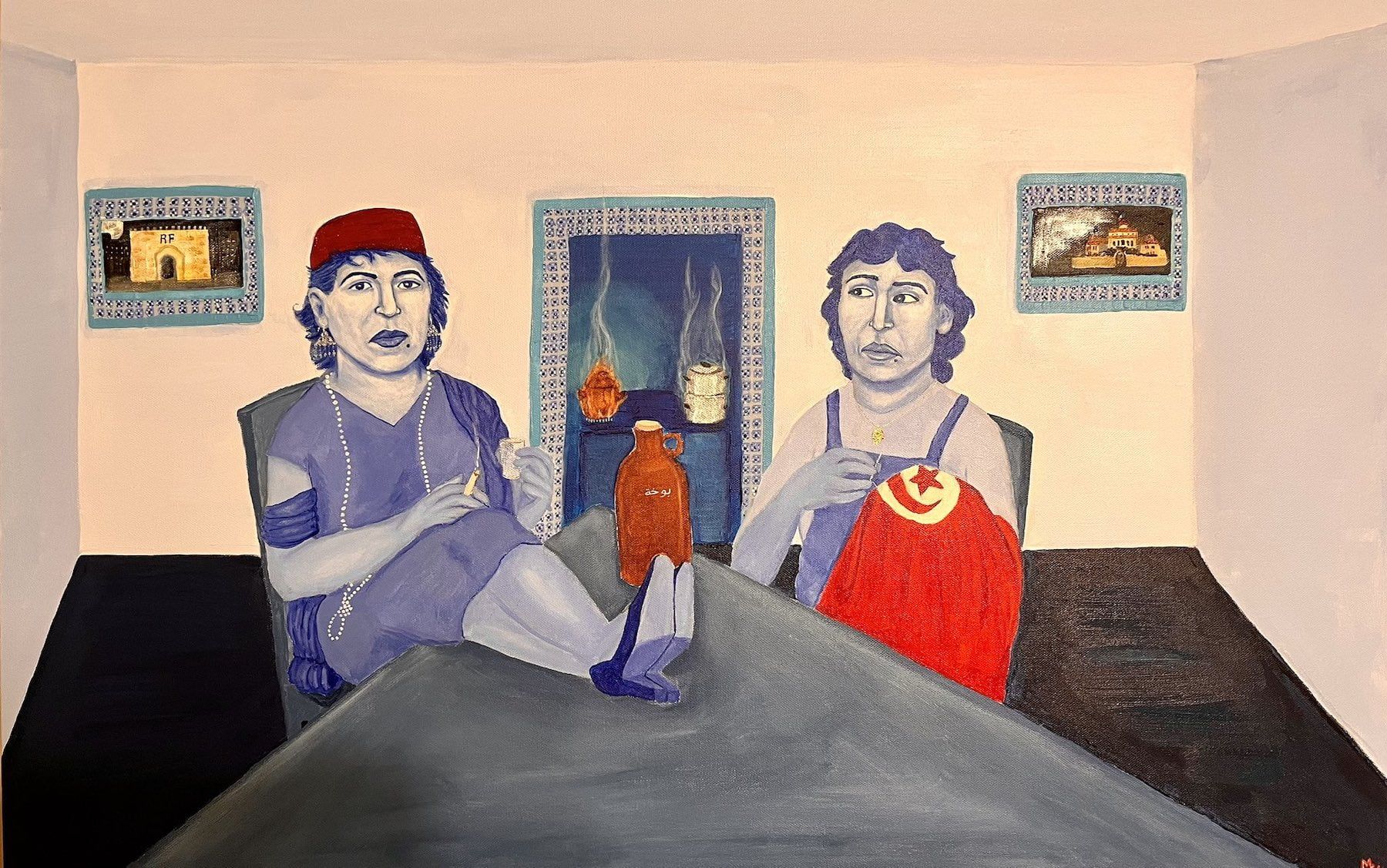
Massoud Hayoun, It’s a small country, but they always do find a way / نعيش نعيش ويحيا الوطن / Sans titre, 2023
How does your creative process differ between working on a new painting and writing a book?
I felt very alone and mostly sorrowful when I wrote each of my three books. I don’t feel sad when I paint, I feel an electricity in my chest. You sign onto a book project, and you’re sitting alone for months or years, deep in your head. Painting, for me, is much more external. I paint, and I’m surrounded by loved ones, dead as they are, reborn and looking back at me with the same subtle, subversive smiles as they did when they were alive. In my second fiction book, I imagine dead loved ones come back to life. In the paintings, I am making those fantasies manifest.
I am constitutionally impatient. I can wait about things I don’t care about, but if I’m trying to say something real, I need to tell you now, while I still care. Maybe it’s breaking news journalism that made me that way. Maybe it’s my unhealthy relationship to coffee. I’ve painted a few paintings in a matter of hours. Bottom line, I’ve always wanted to show you rather than tell you, and that was my problem with writing.
How do you see your practice and subject matter expanding and developing in the future?
I think what fascinates me about the work of Jesús Martí Martín is it isn’t immediately identifiable as figurative. He’s painting masses of humans cavorting in forests. It’s a bit frightening and a bit heartening — all at once. I ultimately want to find ways that subvert entirely our ideas of figurative painting while still allowing it to express ideas that I believe are in service of our related struggles for human life and liberation.
What interests do you have outside of writing and painting? What keeps you ticking as a creative?
I love to wander Downtown Los Angeles doing nothing. And I love to listen to classic American rock and classic Arabic music from the 1940s on. In other countries than the U.S., I’ve loved to sit in a cafe and smoke and drink coffee and watch people. I love to talk to people about food. I love the films of Pedro Almodóvar and Luis Buñuel.
And finally, what does 2024 hold in store for you?
In February, I’m showing with African Arty Gallery at 1-54 Festival in Marrakech. It’s very moving to me, because I’ll be showing works about North Africa in one of my family’s ancestral homelands. From there, here’s hoping for happiness, whatever that maybe be! I’m gonna find out!
Learn more about Massoud Hayoun at massoudhayoun.com.
To find out more about 1-54 Contemporary African Art Fair go to 1-54.com.
Interview Jacopo Nuvolari
Featured image: Massoud Hayoun, Between broken promises, harissa, 2023

